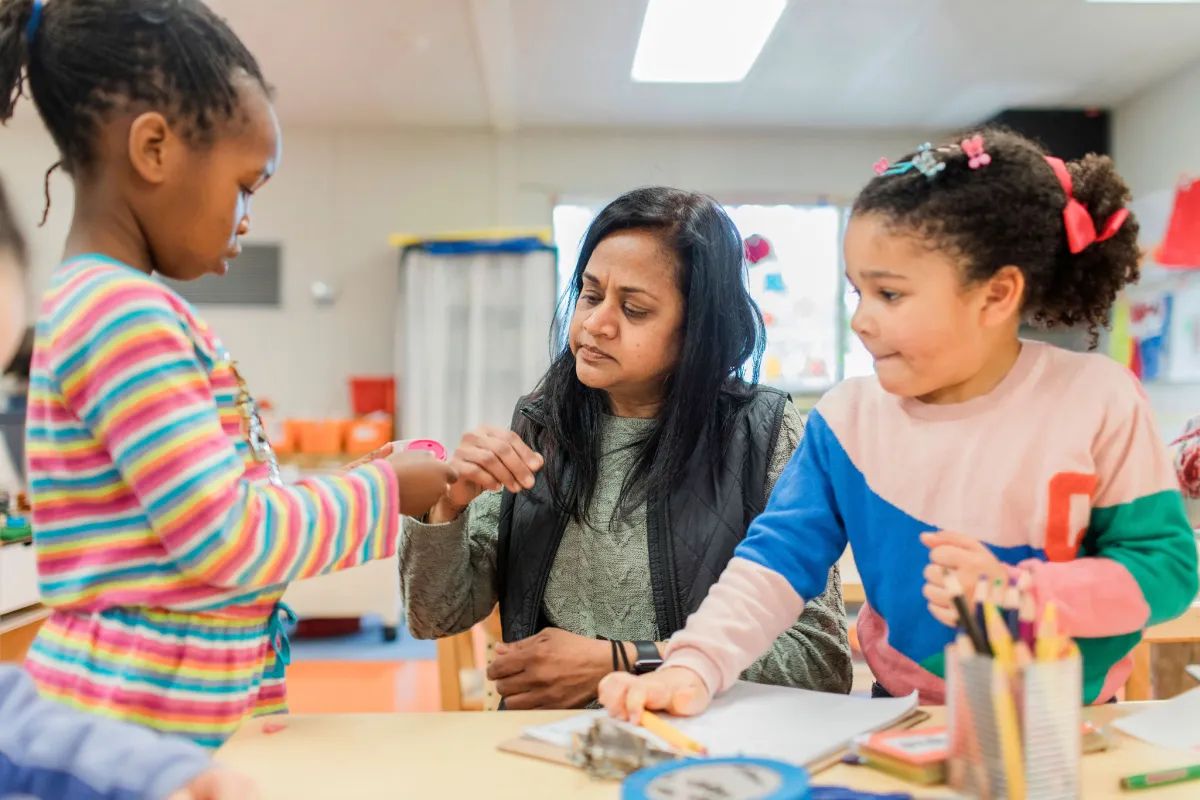California Pre-K Revolution: California’s Pre-K Revolution has been a subject of intrigue and debate, with its journey marred by both successes and challenges. The implementation of Transitional Kindergarten has shed light on disparities within classrooms, prompting a closer examination of its role in shaping the educational landscape of the state.
California’s ambitious initiative to provide early education opportunities has faced hurdles that demand attention and innovative solutions. As we navigate through the turbulent path of Pre-K education in California, the future outlook and the pressing challenges that lie ahead raise critical questions about the direction of this transformative journey.
Classroom Disparities in Transitional Kindergarten
In the bustling city of Oakland, California, a stark contrast in classroom conditions emerges between teachers like Yasmin Kudrolli, benefiting from ample staffing and resources, and Alicia Simba, struggling with understaffing and lack of support in their transitional kindergarten settings. Yasmin Kudrolli, with a well-equipped classroom and a sufficient number of support staff, can provide individualized attention to her students, creating an engaging and enriching learning environment. On the other hand, Alicia Simba faces the daunting challenge of managing a classroom with limited staffing and resources, making it difficult to meet the diverse needs of her young learners.
The disparities in transitional kindergarten classrooms not only impact the teachers but also have profound effects on the students. In well-resourced classrooms like Kudrolli’s, children have access to a wide range of educational materials and benefit from personalized instruction, setting a strong foundation for their academic growth. Conversely, in understaffed and under-supported classrooms like Simba’s, students may not receive the necessary attention and resources, potentially hindering their learning progress and overall development.
These discrepancies underscore the urgent need for addressing inequities in transitional kindergarten settings to ensure that all students have equal access to quality early education. By addressing these challenges and providing adequate support to teachers like Alicia Simba, California can work towards creating a more equitable and effective universal transitional kindergarten program.
California’s Ambitious Initiative
Embarking on a bold endeavor to revolutionize early education, California’s ambitious initiative for universal transitional kindergarten sets out to provide high-quality educational opportunities to all 4-year-olds across the state. This groundbreaking move signifies a pivotal moment in the state’s commitment to ensuring that every child has access to a strong educational foundation. The initiative not only aims to bridge educational gaps but also strives to foster a love for learning from a young age.
To achieve this monumental task, California has laid out a comprehensive plan that includes:
- Expanding Access: By offering transitional kindergarten to all 4-year-olds, California is expanding access to early education, ensuring that more children have the opportunity to start their educational journey on the right foot.
- Enhancing Quality: The initiative focuses on providing high-quality education, with a curriculum designed to meet the developmental needs of young learners and prepare them for future academic success.
- Supporting Educators: California is investing in professional development opportunities for educators to ensure they have the tools and resources necessary to deliver effective and engaging instruction in transitional kindergarten classrooms.
- Engaging Families: Recognizing the importance of family involvement in a child’s education, the initiative promotes partnerships between schools and families to create a supportive learning environment both at home and in the classroom.
Through these strategic measures, California’s ambitious initiative for universal transitional kindergarten aims to lay a strong educational foundation for the state’s youngest learners, setting them up for a lifetime of success.

Addressing Challenges in Transitional Kindergarten
Navigating through staffing shortages and infrastructure limitations, districts statewide confront a myriad of obstacles in addressing challenges within transitional kindergarten programs. Despite concerted efforts, such as phased enrollment and increased funding, significant hurdles persist in ensuring universal access to high-quality early education in California. Some classrooms struggle with a lack of essential resources, while others find it challenging to meet the diverse needs of their young students.
To provide a clearer overview of the challenges faced by districts in implementing transitional kindergarten, let’s a table highlighting some key obstacles:
| Challenges Faced in Transitional Kindergarten |
|---|
| Staffing Shortages |
| Facility Constraints |
| Inadequate Resources |
| Diverse Student Needs |
This table encapsulates the multifaceted difficulties that districts encounter while striving to deliver effective transitional kindergarten programs. Staffing shortages and facility constraints can hinder the quality of education provided, while inadequate resources and the diverse needs of students further compound the challenges faced by educators and administrators. By acknowledging and addressing these obstacles, California can move closer to achieving its goal of universal access to high-quality early education.
The Role of Transitional Kindergarten in Education
Serving as a pivotal link between early childhood education and the formal schooling system, transitional kindergarten plays a crucial role in fostering the foundational skills necessary for young learners’ academic success. This innovative program offers a unique educational experience that sets the stage for future learning.
- Development of Essential Skills: Transitional kindergarten focuses on developing crucial cognitive, social, and emotional skills in young children, preparing them for the academic challenges ahead.
- Bridge to Kindergarten: By providing an additional year of schooling, transitional kindergarten acts as a vital bridge between preschool and kindergarten, ensuring a smoother transition for children.
- Promotion of School Readiness: The program aims to enhance school readiness by exposing children to early learning experiences, setting a strong foundation for their educational journey.
- Equity and Access: Ensuring equitable access to transitional kindergarten is essential for promoting educational equity. By offering this opportunity to all children, regardless of background, the program helps level the playing field and reduce disparities in learning outcomes.
Transitional kindergarten holds the promise of improving educational outcomes and narrowing achievement gaps. As educators and policymakers work towards refining and expanding this initiative, its significance in shaping the academic success of young learners cannot be understated.
Future Outlook and Challenges
In looking ahead to the future of California’s universal transitional kindergarten program, stakeholders face a landscape filled with both promise and persistent challenges as they seek to advance early education initiatives. The potential of this program to revolutionize early education and bolster academic success is undeniable. However, significant obstacles loom on the horizon, including staffing shortages and infrastructure limitations that threaten to impede progress.
Despite these challenges, educators and advocates remain resolute in their commitment to realizing the vision of universal access to high-quality early education. They recognize the profound impact that such initiatives can have on children’s futures and the overall well-being of society. By addressing staffing issues through targeted recruitment and retention strategies, as well as investing in the necessary infrastructure to support the program, stakeholders can overcome these hurdles and pave the way for a brighter future for California’s youth.
Moreover, ongoing efforts to secure sustainable funding streams and garner continued support from policymakers will be essential in ensuring the long-term success and viability of the transitional kindergarten program. By navigating these challenges with foresight and determination, stakeholders can chart a course towards a more equitable and robust early education system that benefits all children in the state.


ALSO READ: Mark Zuckerberg California Mansion Sale: What Was Its Price?
News in Brief
California’s ambitious push for universal transitional kindergarten encounters disparities, with some classrooms flourishing while others struggle. Teachers like Yasmin Kudrolli benefit from ample support, but Alicia Simba faces understaffing issues. Despite challenges, the initiative aims to bridge educational gaps, enhance quality, and engage families. Yet, staffing shortages and infrastructure limitations persist, hindering progress. Transitional kindergarten serves as a vital bridge to formal schooling, fostering essential skills and promoting equity. However, addressing obstacles like staffing and infrastructure remains paramount for the program’s success. With ongoing efforts and determination, California strives to create a more equitable and robust early education system for all children.
Our Reader’s Queries
Is there pre k in California?
While families have the freedom to select a pre-K program for their four-year-olds, Transitional Kindergarten (TK) stands as the sole universally accessible and cost-free option within California’s public education framework.
What is universal TK in California?
Transitional Kindergarten (TK) is a universally accessible and no-cost program designed for eligible four-year-old children. By the 2025-26 school year, it will be available to all four-year-olds. Parents have the option to enroll their children in TK or any other prekindergarten program of their choice.
Is there universal Pre-K in the US?
Currently, only Florida, Georgia, and Oklahoma offer universal pre-K access to all four-year-olds. Meanwhile, the District of Columbia, Illinois, Iowa, Louisiana, New York, and West Virginia have established multi-year initiatives to introduce universal pre-K programs for four-year-olds.

